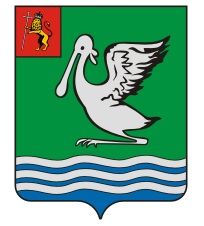Krasnaya Gorbatka

Krasnaya Gorbatka is an urban-type settlement, the administrative center of the Selivanovskiy district of the Vladimir region, with a population of 8,268 people (2015). Located 130 km south-east of Vladimir on the Kolp River (Oka basin). Selivanovo railway station on the Kovrov-Murom line.
History
The name and origin of the settlement of Krasnaya Gorbatka (from Russian – "gorb" – "hump") is often explained on the basis of a legend about how Ilya Murometz defeated the Nightingale the Robber, who plundered traveling merchants and attacked people. There lived a villain on a hump (hill), overgrown with oaks, on one side of which there was a red pine forest, and on the other– the river stretched. The water in the river was so pure and transparent that it seemed white, like a bird spoonbill ("kolpitsa" – in Russian – the river Kolp). Ilya Muromets freed the "glorious hump" from the Nightingale the Robber, and since then this place is considered happy. At the top of the hump, Ilya put up a chapel, which existed here for a long time, to the founding of a paper mill.
This beautiful legend even formed the basis for the coat of arms of the Selivanovsky district, adopted in December 2012 (the question of the need for a coat of arms of the settlement of Krasnaya Gorbatka is under discussion). The central figure of the coat of arms is a bird spoonbill, which once nested along the banks of the Kolp River flowing on the territory of the district. The expression "white, like a spoonbill " in those places was suitable for this river, since the water in it was unusually clean. Extensive forests (they are symbolized by the green color on the coat of arms) and an abundance of clean water determined the construction of a paper mill, around which the settlement of Krasnaya Gorbatka was formed.
The year of the founding of the village is 1873, when G.I. Sposobin, a native of these places, bought land near the village of Elizavetino, began construction of a paper mill on the left bank of the Kolp River. By the end of 1874 more than a hundred workers from the nearby villages had labored at the factory. The construction in 1879 of the Kovrov-Murom railway branch, which took place 5 km from the factory, contributed to the development of local production. The paper produced by the Gorbatka’s factory in 1882 received a gold medal at the Nizhny Novgorod fair.
Around the paper mill, a settlement for workers and employees began to be settled, which gradually grew into a fairly large settlement with a developed infrastructure.
After the October Revolution of 1917, the paper mill was nationalized. The first red director of the factory was P.N. Kotkov, and then – a specialist from the city of Ivanovo-Voznesensk M.P. Resh. The factory was called "Krasnaya Gorbatka" ("Krasnaya" – "Red" in English). In 1919 a fire broke out in the factory, as a result of which the main workshops were damaged. However, the factory was restored by the self-sacrificing labor of the workers, and in the early 1920s paper production was again established.
In 1929 the Selivanovo district was organized, which included 189 settlements. Originally the administrative center of the district was a settlement located at the railway station of Selivanovo, where there were only 37 farms with a population of 185 people. However, the settlement of the factory "Krasnaya Gorbatka" in 1929 was several times larger – 143 farms with a population of 519 people. Therefore, already in 1931 the administrative center of the Selivanovo district was moved to Krasnaya Gorbatka.
In 1939 the paper mill closed as unprofitable, all premises were sealed, and the equipment was sent to the Karelian-Finnish ASSR. The settlement lost its only industrial enterprise.
However, in September 1941, a mechanical plant No.12 from the town of Borovichi, the Leningrad region (now the Novgorod region), was evacuated to Krasnaya Gorbatka, along with engineering and technical personnel, workers and members of their families (on the whole about five hundred people). The evacuated plant was housed in the old buildings of the paper mill. In a short time, the equipment was installed, and the production of products necessary for the front began: artillery, aviation, anti-aircraft and machine gun sights, and details for hand grenades. Thus, in the tragic days of the Great Patriotic War a new page was opened in the history of the settlement of Krasnaya Gorbatka, which was connected with a mechanical plant (currently OJSC "Selivanovo Machine Building Plant").
In 1943 Krasnaya Gorbatka received the status of an urban-type settlement. The settlement at the station Selivanovo and the timber mill "Sila Oktyabrya" were subordinated to the Krasnaya Gorbatka village Council .
The urban-type settlement Krasnaya Gorbatka received great development in the post-war period, especially in the 1960s and the 1980s. During this period, all the main administrative buildings, industrial facilities, multi-apartment houses and communications were built.
Economy
Today, the town forming enterprise of Krasnaya Gorbatka is the OJSC "Selivanovsky Machine Building Plant" (SMZ), the largest in the region. SMZ produces parts of railway locomotives, tram and other motor wagons, track equipment, etc. It is one of the main suppliers of OJSC "Russian Railways".
Sights
There are few attractions in the settlement of Krasnaya Gorbatka: the SU-9 airplane, installed in memory of the pilot-countryman, Hero of the Soviet Union N.I. Shmelkov; a monument to the revolutionary I.N. Utkin (Stanko). In 2012, the temple was consecrated in the name of Sergius and Nikon of Radonezh.
 Tourism portal of the
Tourism portal of the